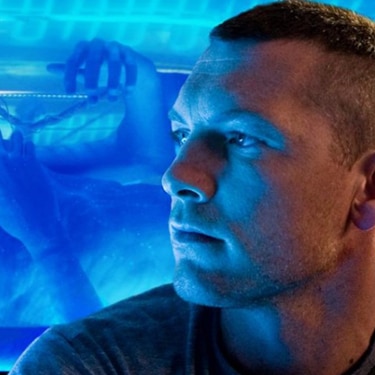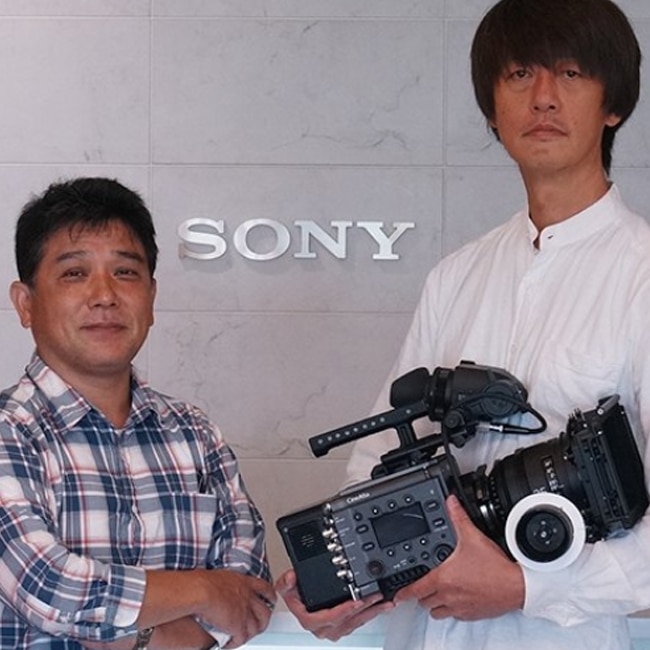
THE DIG: Behind The Scenes Interview
Joseph Kosinski - Writer, Director
Tell us about THE DIG.
“Every director has a folder full of abandoned ideas or commercials you pitched on or short films you pitched that for whatever reason didn’t go. My folder happens to be pretty deep. We first talked about how to showcase and test out VENICE and give us a variety of conditions to torture the camera. THE DIG seemed like a good one that it was nighttime, daytime, urban, desert, interiors, exteriors, driving shot and helicopter simulating film shoot.”

In general, what is important for you in terms of camera qualities?
“I want a blank slate. I want flexibility to take an image any number of directions giving me basically what I saw in the day, that kind of neutral look, the look I created in the moment and able to push it around without breaking down. What we’re seeing with VENICE, even though it’s a prototype, the dynamic range is something you notice right off the bat. It’s fantastic. I was immediately struck by an improvement of the skin tones, the way it rolls into the highlights and the neutrality. I would say the image is beautiful.”
The dynamic range is something you notice right off the bat. It’s fantastic. I was immediately struck by an improvement of the skin tones, the way it rolls into the highlights and the neutrality. I would say the image is beautiful.
Joseph Kosinski
Writer, Director
Following the shoot, how was the grading in standard dynamic range?
“A dark black car with a black interior shooting out midday desert pushing the envelope of what a camera can capture and yeah, seeing detail outside the windows, great shadow detail, the way the camera rolls into the highlights, like shots pointing directly into the sun. We have one of those in the spot. It was very clear from our first look at the footage that this was another kind of leap forward. Cinematographer Claudio Miranda, ASC talked about as well the smoothness of how it renders skin tones looked very natural and falls in really nicely. You don’t want to search for it or hunt for it. It should be there and VENICE had it there.”


VENICE is a full-frame camera, what do you expect to have by using aspect ratios 2.66: 1 and 2.39: 1?
“For this particular project, that ultra-wide aspect ratio really suited the landscapes and the shots we were framing up. We shot it on set. We kind of protected for it but I thought we would end up hard matting the 2:39: 1 version. But after seeing it, I fell in love with that extra wide ratio suited to the desert landscapes and nature of this story. I did research myself to understand why 2:39: 1 exists and it was due to the fact that the soundtracks were included on the negative itself using up part of the width of the film. We don’t put audio on the visual media anymore so why stay compromised in that way in terms of digital media? That is why I felt “let’s use the full chip”, because we can digitally, and maybe bring back this 2.66: 1 format which is what anamorphic was originally capable of. So, I love having full-frame option in the future and being able to shoot in that format.”
Claudio Miranda, ASC - Cinematographer
Tell me about this project
“I remember Joe always wanted to do a project on his own and I thought it would be good to present it to Sony and see actually if we can get this made for this new camera. Joe and I like testing the latest and greatest cameras that are coming out and we’ve done it in the past with the F65 and F35.”

You went to Japan and gave engineers very specific feedback?
“It was important that we addressed the anamorphic issue. We had to use other camera brands when we wanted to take advantage of the full 4 x 3 anamorphic and any other lenses. Now, the choices of lenses have opened up considerably. Also, with full-frame, 24 x 36mm, it opens up the use of 65mm lenses that were once limited to only film cameras. I just think that’s incredible to get the depth of field, to be able to actually shoot with those lenses at night because of the high sensitivity of the new image sensor in VENICE. That’s kind of a new opening for us as well that was not possible before.”

What else have you discussed with the VENICE engineers in Japan?
“I put a wish list of “can we get all the NDs inside the camera?” – Meaning I wanted all eight steps of ND, would this be even possible? If so it would be a first for any camera. When the engineers arrived with the prototype camera bodies I was really impressed, they implemented all eight, with steps of 0.3, 0.6, 0.9, 1.2, 1.5, 1.8, 2.1 and 2.4, implemented internally to VENICE. The filters are really accurate steps and there’s no loss or shift even at the heaviest ND we used during filming. It covers the whole gap. There’s no need to carry ND filters anymore. This is a huge advantage for remote set ups, and for helicopter and drone work. We can even change the ND values remotely without having to be next to the camera.”
How did you like the quality of the pictures you're seeing?
“I was especially impressed with the color rendition. What I love about the color, it feels a little more cinema, it’s a little bit softer feeling, also there’s a lot more dynamic range than before. The highlight roll-off is really smooth. I was talking to Alex Carr (DIT) and he’s finding at this very early stage, that VENICE has tremendous range in the highlights. In THE DIG, we are filming in the rock quarries, and the sun goes down behind the rocks and there’s still bright sky in the background. So I’m trying to hold that latitude and the detail that’s down on the ground and it’s holding all the detail in the shadows. Pretty amazing stop range. Smooth latitude feels like it’s not as electronic, a little bit homier, a kind of organic response. Additionally, I really love how the camera responds to skin tones, really beautiful.”
What I love about the color, it feels a little more cinema, it's a little bit softer feeling, also there’s a lot more dynamic range than before. The highlight roll-off is really smooth.
Claudio Miranda, ASC
Cinematographer
What is your impression for the operator side and the assistant side design?
“There are actually two menu panels on this camera. One for the camera assistant side which has the full set of menu data and also one for the operator side which is a little smaller sized menu showing all the critical information the Cinematographer need to know. Everything’s really much clearer to find and you can set color temperatures, NDs, shutter angles, and other often needed functions.”

What else impressed you about the VENICE?
“The Viewfinder (DVF-EL200), a lot quicker response, less delay. And I like the size. In THE DIG, there was a point trying to get VENICE into the Shotover K1 helicopter housing. If you go with a bigger body, then choices of lenses on the other side are limited. So it is really nice the VENICE body is small enough which makes my lens choices on the other end much wider. This is super important to be able to have that choice available to me.”

How would you recommend VENICE to Cinematographers?
“Well, I think it’s just great to have a camera that has all the NDs built in. You can go with a really small package and can be pretty lightweight. Also, you can choose any kind of lens you’d like to use. I think the color gamut is great. It has great dynamic range, smooth highlight handling, and beautiful skin tone rendition. It has a softer kind of overall tone curve I think that feels easy to work with and produces a wonderful image.”
Dan Ming - 1st Assistant Camera (A Camera)
How did you get involved with this film project THE DIG?
“I’m Claudio’s First AC and Claudio was asked to shoot this project, THE DIG, to test these new cameras out. It’s always fun being the first to use a new camera and also challenging to use something that no one’s ever used before.”

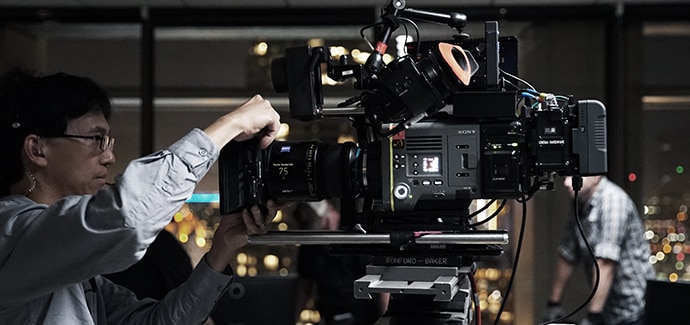
How did VENICE perform and what are your impressions?
“We took these bodies and set them up and just threw them in the heat and the dust and the dirt and just did what we would normally do with any camera for a shoot and with these subjected them to even more punishment. We actually went out of our way to let the cameras sit in the sun a bit to see how hot they could run, and they didn’t overheat at all. So the tolerance of VENICE is definitely markedly improved in terms of the environments it could work in.”
The boot time of the camera is very impressive, from OFF to first picture within five seconds is very impressive. No other camera can do that.
Dan Ming
1st Assistant Camera (A Camera)
What were some of the features that appealed to you more?
“The boot time of the camera is very impressive, from OFF to first picture within five seconds is very impressive. No other camera can do that. Five seconds you have a picture to work with. It sounds like a small feature but this alone will save a huge amount of time on set each day.”
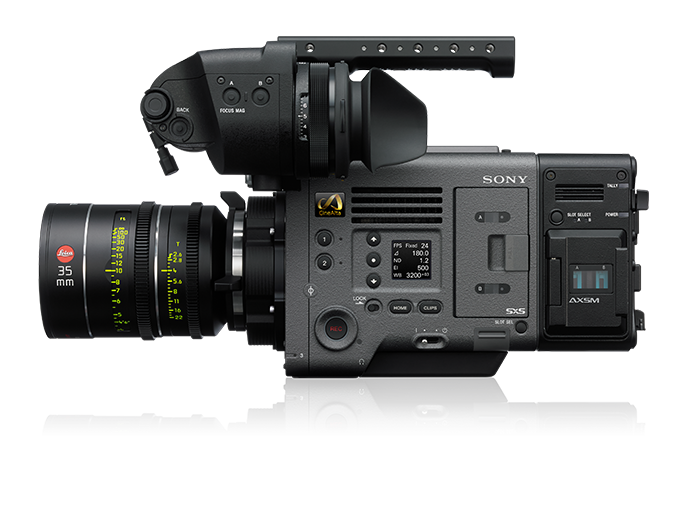

Talk about the image performance you were seeing on set
“For THE DIG we elected to shoot Full Height 18mm anamorphic 4×3. So we used the top and the bottom of the frames and not a full Vista Vision width—as we know, the field of view of anamorphic lenses is twice the field of view as a spherical lens so it reduces your depth of field, but it gives you that look with the anamorphic flares that streak across. It’s a more organic look than Spherical.”
Bob Smathers - 1st Assistant Camera (B Camera)
“The camera is a good size. It has a nice dovetail on the top with the handle that slides into that and there were several variations with that. The internal NDs are nice. Those worked flawlessly from 0.3 to 2.4 quick and easy. The user interface is clean, simple and nice.”

Alex Carr - Digital Imaging Technician
What are your experiences with the workflow?
“For VENICE, the workflow is almost identical, as it uses Sony RAW. It uses the same media, the same AXS-R7 recorder as the previous Sony camera generation. But there is something new. There’s now a Thunderbolt 2 card reader, (AXS-AR1) which is one of the fastest card readers of any camera right now. I back up all of my media to a solid state HDD array and I can copy one card at 1 GB per second, so it’ s very, very, very fast.”
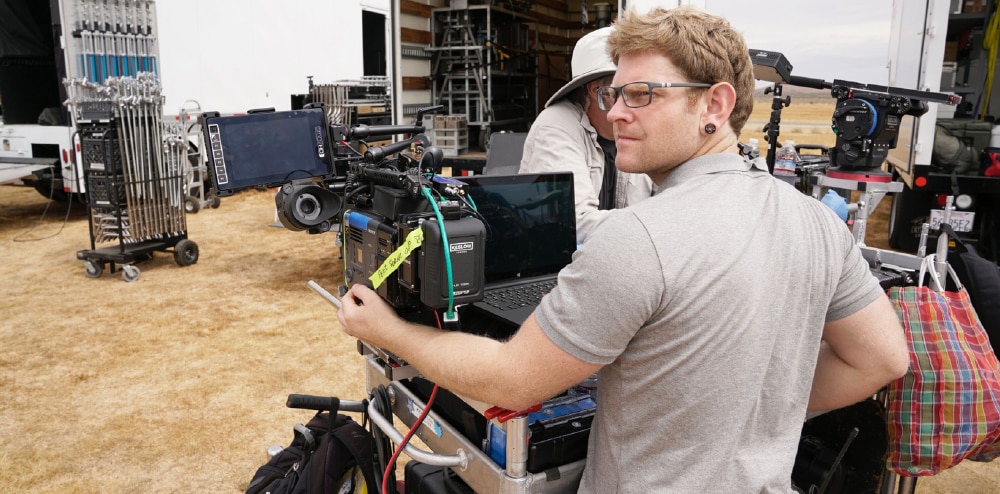
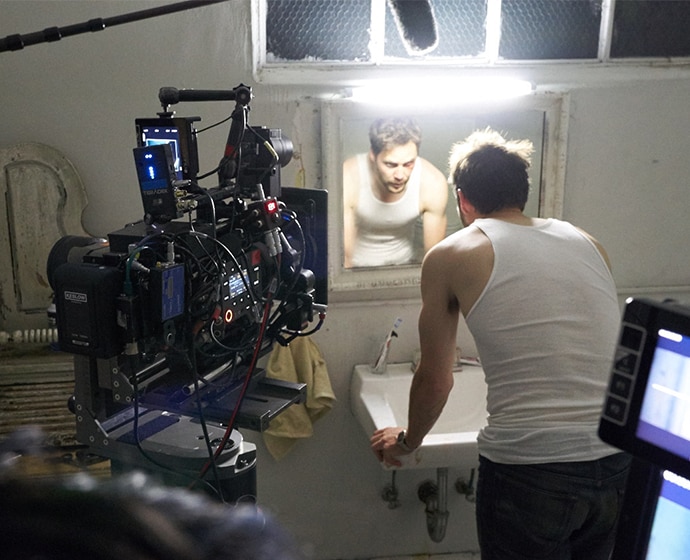
What are your impressions of the imagery you were seeing coming from VENICE?
“When working with VENICE, we have a huge color gamut. At the time of this writing we have only done preliminary tests, but so far the results are pretty amazing. VENICE uses the S-Log3 gamma setting and has a very wide dynamic range, and it allows us to push and pull the image in any direction the Director needs to achieve his vision of the story. So, even in some shots where we don’t always have the best lighting or don’t always have the best the best circumstances, we can still push and pull and move around without getting too noisy or getting cornered into a particular look. So, it’s one of the most flexible cameras I have worked with. This also helps us to match a cinema or a film look very easily. It’s a very, very good match to cinematographers who are used to using film or who are looking for a film look.”
While we were shooting in the desert, we had very high temperatures. The cameras were very hot, but they never really failed.
Alex Carr
Digital Imaging Technician
How robust is the camera?
“While we were shooting in the desert, we had very high temperatures. The cameras were very hot, but they never really failed. When shooting in such dusty locations, it’s good to have ND filters inside because then you’re not switching filters and cleaning filters all the time and it can save a ton of time and headaches.”

Did you like the menu system?
“The menu system of VENICE is very quick, very responsive, very clean to navigate, and it uses a lot of cinema terms instead of broadcast terms. This helps the creative minds within the film industry to understand the camera not from the perspective of engineering but the perspective of a cinematographer or a camera assistant. You can understand the camera just simply by pressing the menu and going through the first few steps, you see, oh, wow, this is very simple, it’s very nice, and it’s quick and easy.”

Mike Sowa - Sr. Colorist, Technicolor
Tell me about your history
“I’ve been in the business 32 years. When I first became a colorist, I started off doing dailies overnight from film on a Rank Cintel with its color correction system. There were just three knobs with joysticks that came off of them, and that was it. Then Da Vinci came out and went to the da Vinci Classic and then moved to da Vinci 2K back in the days of high definition. I have been on four different systems throughout my career.”
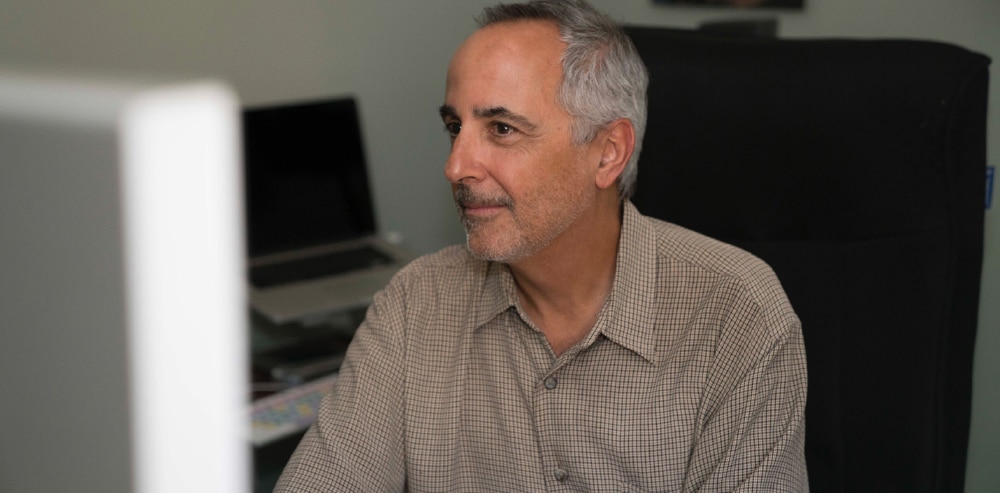
What is your opinion seeing the imagery as you grade it?
“There are certain cameras that require a lot of individual color work to get it to look like traditional film. Nowadays, the digital cameras capture so many colors, almost too much. Some of them have colors that don’t make any visual sense to me. I live in a world of dynamic range and it’s always the detail bottom end and top end of the signal. Images that Claudio gives me fall into a place where he has intended it to be. I have to stay within that. I can tell you he is incredibly happy with the amount of dynamic range and the ease in that he gets these images because it’s all about lighting the sets and he loves to shoot dark also. There is a lot of nice beautiful soft black but it’s still black. Sense of all the detail that he’s expecting to see, I look at that and I think okay, this camera nailed it.
“The detail between the bottom end and the high end is, with the combination of lenses that Claudio used, is so crisp and clean that you get that 3D feel. Claudio and Joe see things the same way mostly. I see things the same way they do now. Getting to that image was incredibly easy. No compromises. The low-light detail and the highlight detail are all there in the camera and there is a nice range between the two so the skin tones fell into a really pretty place. He wanted overhead light but there’s a real soft quality in the low-light flesh tones that I didn’t have to push or pull to work on it at all. Trying to pull color out in this condition is very difficult with other cameras, and I was really happy with what I was getting in this camera without having to fight for it, and most importantly with no windowing needed. What you see on screen is what the camera did, not what I did.”
I was really happy with what I was getting in this camera without having to fight for it, and most importantly with no windowing needed. What you see on screen is what the camera did, not what I did.
Mike Sowa
Sr. Colorist, Technicolor
What do you think of how the THE DIG will perform in High Dynamic Range? Do you see any issues?
“No new issues. Typically, the issues are with the display itself. With HDR grading, if we do have an image that’s slightly noisy in SDR, when you go to HDR, it’s going to magnify a lot of the issues. Stuff that looks great is just going to look great. Often I have to go back in and massage a little bit. In most of those cases, it’s a noise problem. The digital noise in digital cameras is a much finer size than film grain. It is pixel based, whereas film grain can be massive depending on the stock that was used and what and how it was exposed. If you try to bring that up, film grain can completely take over a face in film, whereas digital noise, the same level can be on the face. It’s easier to treat digitally than with film grain if you have to do it.”


